Laravel 9 User Roles and Permissions Step-by-Step Tutorial
In this post, I will share how to implement the ACL method for Laravel roles & permissions with a step-by-step guide that is easy to understand.

In this post, I will share how to implement the ACL method Roles & Permissions on Laravel 8, and 9 with a step-by-step guide that will help you to understand the flow. We know that implementing user roles and permissions is one of the basic functionality to implement in our web applications to restrict the specific user with only admin allowed to access. That's why we need to implement role-based users with assigned permissions. In this example, I automatically read the route as permission via middleware so that you don't need to add it manually. We have also a feature in this example to add permission manually.
By following this tutorial it would be easier to implement Laravel permission and secure your user accounts.
In this example I added the following modules:
- User Management
- - Creating simple user management using Laravel 9 so that it will be easier for you to apply for Laravel permission.
- Roles Management
- - A simple roles management that will help us to add roles for a user account and determine the user what assigned Laravel permission.
- Permissions Management
- - A management for Laravel permission that will list all route names using a Laravel console command.
- Product Management
- - A simple product management and apply for the Laravel permissions with each role as a user.
With authentication which you can follow in my previous tutorial.


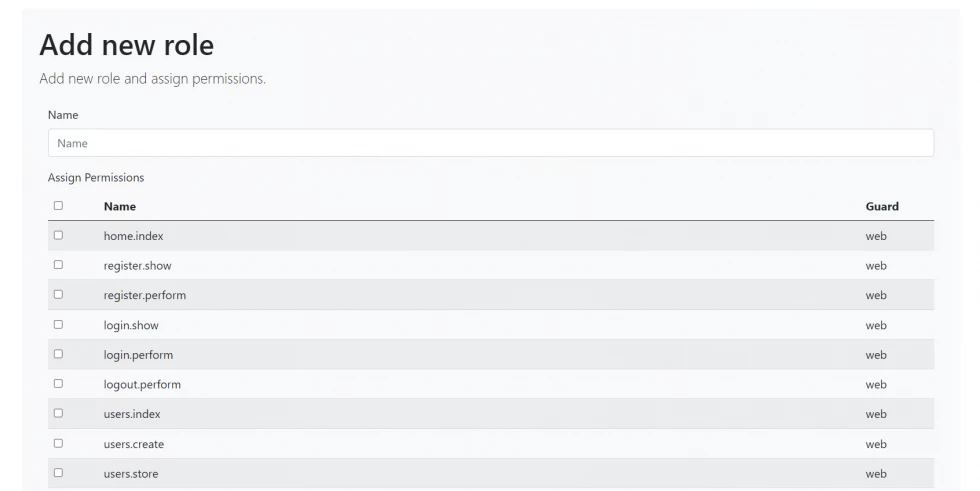
So let's start...
Step 1: Laravel Installation
I assume that you have your project already in your local. To shorten this post kindly follow my previous tutorial with authentication functionality.
Or run and clone my previous tutorial about authentication.
git clone https://github.com/codeanddeploy/laravel8-authentication-example.gitThen once you cloned it just copy and paste it to your htdocs if you using Wampp on Windows.
Then navigate your project and run this command:
composer updateStep 2: Install Packages
Next, we need to install our Laravel packages for ACL and Form Collections. Run the following command below:
composer require spatie/laravel-permissioncomposer require laravelcollective/htmlThen run this command:
php artisan vendor:publish --provider="Spatie\Permission\PermissionServiceProvider"After running the above command you will see a config file named permission.php and migrations with *_permission_tables.php. Now let's run the command to migrate the permission tables.
php artisan migrateStep 3: Create Post Migration
Next, we will create a migration for the posts table. Run the following command to do it.
php artisan make:migration create_posts_tableThen let's do our post-migration. See below the complete code:
<?php
use Illuminate\Database\Migrations\Migration;
use Illuminate\Database\Schema\Blueprint;
use Illuminate\Support\Facades\Schema;
class CreatePostsTable extends Migration
{
/**
* Run the migrations.
*
* @return void
*/
public function up()
{
Schema::create('posts', function (Blueprint $table) {
$table->id();
$table->unsignedBigInteger('user_id');
$table->string('title', 70);
$table->string('description', 320);
$table->text('body');
$table->timestamps();
$table->foreign('user_id')
->references('id')
->on('users')
->onDelete('cascade');
});
}
/**
* Reverse the migrations.
*
* @return void
*/
public function down()
{
Schema::dropIfExists('posts');
}
}
Then run, migration:
php artisan migrateStep 4: Create Models
Next, we will create our models and set up the important details. If you are using my previous authentication tutorial you just need to update the User model. See the following complete codes below:
app/Models/User.php
<?php
namespace App\Models;
use Laravel\Sanctum\HasApiTokens;
use Spatie\Permission\Traits\HasRoles;
use Illuminate\Notifications\Notifiable;
use Illuminate\Contracts\Auth\MustVerifyEmail;
use Illuminate\Database\Eloquent\Factories\HasFactory;
use Illuminate\Foundation\Auth\User as Authenticatable;
class User extends Authenticatable
{
use HasApiTokens, HasFactory, Notifiable, HasRoles;
/**
* The database table used by the model.
*
* @var string
*/
protected $table = 'users';
/**
* The attributes that are mass assignable.
*
* @var array
*/
protected $fillable = [
'name',
'email',
'username',
'password',
];
/**
* The attributes that should be hidden for arrays.
*
* @var array
*/
protected $hidden = [
'password',
'remember_token',
];
/**
* The attributes that should be cast to native types.
*
* @var array
*/
protected $casts = [
'email_verified_at' => 'datetime',
];
/**
* Always encrypt password when it is updated.
*
* @param $value
* @return string
*/
public function setPasswordAttribute($value)
{
$this->attributes['password'] = bcrypt($value);
}
}
Next, we will generate a model for Post. Run the following command:
php artisan make:model PostPost model code below:
app/Models/Post.php
<?php
namespace App\Models;
use Illuminate\Database\Eloquent\Factories\HasFactory;
use Illuminate\Database\Eloquent\Model;
class Post extends Model
{
use HasFactory;
protected $table = 'posts';
protected $fillable = [
'user_id',
'title',
'description',
'body'
];
}
Step 5: Add middleware
In this example, I'm doing a custom middleware for our Laravel Permission to read the current route if existing to our permission.
Let's create our custom middleware. Run the following command:
php artisan make:middleware PermissionMiddlewareAnd here is the custom code of our PermissionMiddlware class. Navigate to App\Http\Middleware\PermissionMiddleware.php
<?php
namespace App\Http\Middleware;
use Closure;
use Illuminate\Http\Request;
use Spatie\Permission\Exceptions\UnauthorizedException;
class PermissionMiddleware
{
/**
* Handle an incoming request.
*
* @param \Illuminate\Http\Request $request
* @param \Closure $next
* @return mixed
*/
public function handle($request, Closure $next, $permission = null, $guard = null)
{
$authGuard = app('auth')->guard($guard);
if ($authGuard->guest()) {
throw UnauthorizedException::notLoggedIn();
}
if (! is_null($permission)) {
$permissions = is_array($permission)
? $permission
: explode('|', $permission);
}
if ( is_null($permission) ) {
$permission = $request->route()->getName();
$permissions = array($permission);
}
foreach ($permissions as $permission) {
if ($authGuard->user()->can($permission)) {
return $next($request);
}
}
throw UnauthorizedException::forPermissions($permissions);
}
}
Then let's register our created middleware and the default Spatie middleware.
Now let's navigate the file app/Http/Kernel.php then in the $routeMiddleware property we will add the following middlewares.
protected $routeMiddleware = [
.
.
.
'role' => \Spatie\Permission\Middlewares\RoleMiddleware::class,
'permission' => \App\Http\Middleware\PermissionMiddleware::class,
'role_or_permission' => \Spatie\Permission\Middlewares\RoleOrPermissionMiddleware::class,
];As you can see above we added our custom middleware.
Step 6: Add Routes
Now let's add our routes, if you are using my Laravel 9 authentication just edit or copy the complete route codes below:
<?php
use Illuminate\Support\Facades\Route;
/*
|--------------------------------------------------------------------------
| Web Routes
|--------------------------------------------------------------------------
|
| Here is where you can register web routes for your application. These
| routes are loaded by the RouteServiceProvider within a group which
| contains the "web" middleware group. Now create something great!
|
*/
Route::group(['namespace' => 'App\Http\Controllers'], function()
{
/**
* Home Routes
*/
Route::get('/', 'HomeController@index')->name('home.index');
Route::group(['middleware' => ['guest']], function() {
/**
* Register Routes
*/
Route::get('/register', 'RegisterController@show')->name('register.show');
Route::post('/register', 'RegisterController@register')->name('register.perform');
/**
* Login Routes
*/
Route::get('/login', 'LoginController@show')->name('login.show');
Route::post('/login', 'LoginController@login')->name('login.perform');
});
Route::group(['middleware' => ['auth', 'permission']], function() {
/**
* Logout Routes
*/
Route::get('/logout', 'LogoutController@perform')->name('logout.perform');
/**
* User Routes
*/
Route::group(['prefix' => 'users'], function() {
Route::get('/', 'UsersController@index')->name('users.index');
Route::get('/create', 'UsersController@create')->name('users.create');
Route::post('/create', 'UsersController@store')->name('users.store');
Route::get('/{user}/show', 'UsersController@show')->name('users.show');
Route::get('/{user}/edit', 'UsersController@edit')->name('users.edit');
Route::patch('/{user}/update', 'UsersController@update')->name('users.update');
Route::delete('/{user}/delete', 'UsersController@destroy')->name('users.destroy');
});
/**
* User Routes
*/
Route::group(['prefix' => 'posts'], function() {
Route::get('/', 'PostsController@index')->name('posts.index');
Route::get('/create', 'PostsController@create')->name('posts.create');
Route::post('/create', 'PostsController@store')->name('posts.store');
Route::get('/{post}/show', 'PostsController@show')->name('posts.show');
Route::get('/{post}/edit', 'PostsController@edit')->name('posts.edit');
Route::patch('/{post}/update', 'PostsController@update')->name('posts.update');
Route::delete('/{post}/delete', 'PostsController@destroy')->name('posts.destroy');
});
Route::resource('roles', RolesController::class);
Route::resource('permissions', PermissionsController::class);
});
});
Step 7: Add Controllers
In this step, we will add our controllers for Users, Posts, Roles, and Permissions kindly see each controller below:
App\Http\Controllers\UsersController.php
<?php
namespace App\Http\Controllers;
use App\Models\User;
use Illuminate\Http\Request;
use Spatie\Permission\Models\Role;
use App\Http\Requests\StoreUserRequest;
use App\Http\Requests\UpdateUserRequest;
class UsersController extends Controller
{
/**
* Display all users
*
* @return \Illuminate\Http\Response
*/
public function index()
{
$users = User::latest()->paginate(10);
return view('users.index', compact('users'));
}
/**
* Show form for creating user
*
* @return \Illuminate\Http\Response
*/
public function create()
{
return view('users.create');
}
/**
* Store a newly created user
*
* @param User $user
* @param StoreUserRequest $request
*
* @return \Illuminate\Http\Response
*/
public function store(User $user, StoreUserRequest $request)
{
//For demo purposes only. When creating user or inviting a user
// you should create a generated random password and email it to the user
$user->create(array_merge($request->validated(), [
'password' => 'test'
]));
return redirect()->route('users.index')
->withSuccess(__('User created successfully.'));
}
/**
* Show user data
*
* @param User $user
*
* @return \Illuminate\Http\Response
*/
public function show(User $user)
{
return view('users.show', [
'user' => $user
]);
}
/**
* Edit user data
*
* @param User $user
*
* @return \Illuminate\Http\Response
*/
public function edit(User $user)
{
return view('users.edit', [
'user' => $user,
'userRole' => $user->roles->pluck('name')->toArray(),
'roles' => Role::latest()->get()
]);
}
/**
* Update user data
*
* @param User $user
* @param UpdateUserRequest $request
*
* @return \Illuminate\Http\Response
*/
public function update(User $user, UpdateUserRequest $request)
{
$user->update($request->validated());
$user->syncRoles($request->get('role'));
return redirect()->route('users.index')
->withSuccess(__('User updated successfully.'));
}
/**
* Delete user data
*
* @param User $user
*
* @return \Illuminate\Http\Response
*/
public function destroy(User $user)
{
$user->delete();
return redirect()->route('users.index')
->withSuccess(__('User deleted successfully.'));
}
}App\Http\Controllers\PostsController.php
<?php
namespace App\Http\Controllers;
use App\Models\Post;
use Illuminate\Http\Request;
class PostsController extends Controller
{
/**
* Display a listing of the resource.
*
* @return \Illuminate\Http\Response
*/
public function index()
{
$posts = Post::latest()->paginate(10);
return view('posts.index', compact('posts'));
}
/**
* Show the form for creating a new resource.
*
* @return \Illuminate\Http\Response
*/
public function create()
{
return view('posts.create');
}
/**
* Store a newly created resource in storage.
*
* @param \Illuminate\Http\Request $request
* @return \Illuminate\Http\Response
*/
public function store(Request $request)
{
Post::create(array_merge($request->only('title', 'description', 'body'),[
'user_id' => auth()->id()
]));
return redirect()->route('posts.index')
->withSuccess(__('Post created successfully.'));
}
/**
* Display the specified resource.
*
* @param \App\Models\Post $post
* @return \Illuminate\Http\Response
*/
public function show(Post $post)
{
return view('posts.show', [
'post' => $post
]);
}
/**
* Show the form for editing the specified resource.
*
* @param \App\Models\Post $post
* @return \Illuminate\Http\Response
*/
public function edit(Post $post)
{
return view('posts.edit', [
'post' => $post
]);
}
/**
* Update the specified resource in storage.
*
* @param \Illuminate\Http\Request $request
* @param \App\Models\Post $post
* @return \Illuminate\Http\Response
*/
public function update(Request $request, Post $post)
{
$post->update($request->only('title', 'description', 'body'));
return redirect()->route('posts.index')
->withSuccess(__('Post updated successfully.'));
}
/**
* Remove the specified resource from storage.
*
* @param \App\Models\Post $post
* @return \Illuminate\Http\Response
*/
public function destroy(Post $post)
{
$post->delete();
return redirect()->route('posts.index')
->withSuccess(__('Post deleted successfully.'));
}
}
App\Http\Controllers\RolesController.php
<?php
namespace App\Http\Controllers;
use DB;
use Illuminate\Http\Request;
use Spatie\Permission\Models\Role;
use App\Http\Controllers\Controller;
use Illuminate\Support\Facades\Route;
use Spatie\Permission\Models\Permission;
class RolesController extends Controller
{
/**
* Display a listing of the resource.
*
* @return \Illuminate\Http\Response
*/
function __construct()
{
}
/**
* Display a listing of the resource.
*
* @return \Illuminate\Http\Response
*/
public function index(Request $request)
{
$roles = Role::orderBy('id','DESC')->paginate(5);
return view('roles.index',compact('roles'))
->with('i', ($request->input('page', 1) - 1) * 5);
}
/**
* Show the form for creating a new resource.
*
* @return \Illuminate\Http\Response
*/
public function create()
{
$permissions = Permission::get();
return view('roles.create', compact('permissions'));
}
/**
* Store a newly created resource in storage.
*
* @param \Illuminate\Http\Request $request
* @return \Illuminate\Http\Response
*/
public function store(Request $request)
{
$this->validate($request, [
'name' => 'required|unique:roles,name',
'permission' => 'required',
]);
$role = Role::create(['name' => $request->get('name')]);
$role->syncPermissions($request->get('permission'));
return redirect()->route('roles.index')
->with('success','Role created successfully');
}
/**
* Display the specified resource.
*
* @param int $id
* @return \Illuminate\Http\Response
*/
public function show(Role $role)
{
$role = $role;
$rolePermissions = $role->permissions;
return view('roles.show', compact('role', 'rolePermissions'));
}
/**
* Show the form for editing the specified resource.
*
* @param int $id
* @return \Illuminate\Http\Response
*/
public function edit(Role $role)
{
$role = $role;
$rolePermissions = $role->permissions->pluck('name')->toArray();
$permissions = Permission::get();
return view('roles.edit', compact('role', 'rolePermissions', 'permissions'));
}
/**
* Update the specified resource in storage.
*
* @param \Illuminate\Http\Request $request
* @param int $id
* @return \Illuminate\Http\Response
*/
public function update(Role $role, Request $request)
{
$this->validate($request, [
'name' => 'required',
'permission' => 'required',
]);
$role->update($request->only('name'));
$role->syncPermissions($request->get('permission'));
return redirect()->route('roles.index')
->with('success','Role updated successfully');
}
/**
* Remove the specified resource from storage.
*
* @param int $id
* @return \Illuminate\Http\Response
*/
public function destroy(Role $role)
{
$role->delete();
return redirect()->route('roles.index')
->with('success','Role deleted successfully');
}
}
App\Http\Controllers\PermissionsController.php
<?php
namespace App\Http\Controllers;
use Illuminate\Http\Request;
use Illuminate\Support\Facades\Route;
use Spatie\Permission\Models\Permission;
class PermissionsController extends Controller
{
/**
* Display a listing of the resource.
*
* @return \Illuminate\Http\Response
*/
public function index()
{
$permissions = Permission::all();
return view('permissions.index', [
'permissions' => $permissions
]);
}
/**
* Show form for creating permissions
*
* @return \Illuminate\Http\Response
*/
public function create()
{
return view('permissions.create');
}
/**
* Store a newly created resource in storage.
*
* @param \Illuminate\Http\Request $request
* @return \Illuminate\Http\Response
*/
public function store(Request $request)
{
$request->validate([
'name' => 'required|unique:users,name'
]);
Permission::create($request->only('name'));
return redirect()->route('permissions.index')
->withSuccess(__('Permission created successfully.'));
}
/**
* Show the form for editing the specified resource.
*
* @param Permission $post
* @return \Illuminate\Http\Response
*/
public function edit(Permission $permission)
{
return view('permissions.edit', [
'permission' => $permission
]);
}
/**
* Update the specified resource in storage.
*
* @param \Illuminate\Http\Request $request
* @param Permission $permission
* @return \Illuminate\Http\Response
*/
public function update(Request $request, Permission $permission)
{
$request->validate([
'name' => 'required|unique:permissions,name,'.$permission->id
]);
$permission->update($request->only('name'));
return redirect()->route('permissions.index')
->withSuccess(__('Permission updated successfully.'));
}
/**
* Remove the specified resource from storage.
*
* @param \App\Models\Post $post
* @return \Illuminate\Http\Response
*/
public function destroy(Permission $permission)
{
$permission->delete();
return redirect()->route('permissions.index')
->withSuccess(__('Permission deleted successfully.'));
}
}
Step 8: Add Requests
In my UsersController I implemented a specific request for each action it will help to shorten your code and put other functions and checking to another class and your code is more readable.
Run the following commands below to generate requests:
php artisan make:request StoreUserRequest
php artisan make:request UpdateUserRequestOnce done, kindly see the code of each request.
App\Http\Requests\StoreUserRequest.php
<?php
namespace App\Http\Requests;
use Illuminate\Foundation\Http\FormRequest;
class StoreUserRequest extends FormRequest
{
/**
* Determine if the user is authorized to make this request.
*
* @return bool
*/
public function authorize()
{
return true;
}
/**
* Get the validation rules that apply to the request.
*
* @return array
*/
public function rules()
{
return [
'name' => 'required',
'email' => 'required|email:rfc,dns|unique:users,email',
'username' => 'required|unique:users,username',
];
}
}
App\Http\Requests\UpdateUserRequest.php
<?php
namespace App\Http\Requests;
use Illuminate\Foundation\Http\FormRequest;
class UpdateUserRequest extends FormRequest
{
/**
* Determine if the user is authorized to make this request.
*
* @return bool
*/
public function authorize()
{
return true;
}
/**
* Get the validation rules that apply to the request.
*
* @return array
*/
public function rules()
{
// Let's get the route param by name to get the User object value
$user = request()->route('user');
return [
'name' => 'required',
'email' => 'required|email:rfc,dns|unique:users,email,'.$user->id,
'username' => 'required|unique:users,username,'.$user->id,
];
}
}
Step 9: Add Blade Files
In this post, we will create our blade files for our view and layout.
resources/views/layouts/app-master.blade.php
<!doctype html>
<html lang="en">
<head>
<meta charset="utf-8">
<meta name="viewport" content="width=device-width, initial-scale=1">
<meta name="description" content="">
<meta name="author" content="Mark Otto, Jacob Thornton, and Bootstrap contributors">
<meta name="generator" content="Hugo 0.87.0">
<title>Fixed top navbar example · Bootstrap v5.1</title>
<!-- Bootstrap core CSS -->
<link href="{!! url('assets/bootstrap/css/bootstrap.min.css') !!}" rel="stylesheet">
<style>
.bd-placeholder-img {
font-size: 1.125rem;
text-anchor: middle;
-webkit-user-select: none;
-moz-user-select: none;
user-select: none;
}
@media (min-width: 768px) {
.bd-placeholder-img-lg {
font-size: 3.5rem;
}
}
.float-right {
float: right;
}
</style>
<!-- Custom styles for this template -->
<link href="{!! url('assets/css/app.css') !!}" rel="stylesheet">
</head>
<body>
@include('layouts.partials.navbar')
<main class="container mt-5">
@yield('content')
</main>
<script src="https://ajax.googleapis.com/ajax/libs/jquery/3.5.1/jquery.min.js"></script>
<script src="{!! url('assets/bootstrap/js/bootstrap.bundle.min.js') !!}"></script>
@section("scripts")
@show
</body>
</html>
resources/views/layouts/partials/messages.blade.php
@if(Session::get('success', false))
<?php $data = Session::get('success'); ?>
@if (is_array($data))
@foreach ($data as $msg)
<div class="alert alert-success" role="alert">
<i class="fa fa-check"></i>
{{ $msg }}
</div>
@endforeach
@else
<div class="alert alert-success" role="alert">
<i class="fa fa-check"></i>
{{ $data }}
</div>
@endif
@endifresources/views/layouts/partials/navbar.blade.php
<header class="p-3 bg-dark text-white">
<div class="container">
<div class="d-flex flex-wrap align-items-center justify-content-center justify-content-lg-start">
<a href="/" class="d-flex align-items-center mb-2 mb-lg-0 text-white text-decoration-none">
<svg class="bi me-2" width="40" height="32" role="img" aria-label="Bootstrap"><use xlink:href="#bootstrap"/></svg>
</a>
<ul class="nav col-12 col-lg-auto me-lg-auto mb-2 justify-content-center mb-md-0">
<li><a href="{{ route('home.index') }}" class="nav-link px-2 text-white">Home</a></li>
@auth
@role('Admin')
<li><a href="{{ route('users.index') }}" class="nav-link px-2 text-white">Users</a></li>
<li><a href="{{ route('roles.index') }}" class="nav-link px-2 text-white">Roles</a></li>
@endrole
<li><a href="{{ route('posts.index') }}" class="nav-link px-2 text-white">Posts</a></li>
@endauth
</ul>
<form class="col-12 col-lg-auto mb-3 mb-lg-0 me-lg-3">
<input type="search" class="form-control form-control-dark" placeholder="Search..." aria-label="Search">
</form>
@auth
{{auth()->user()->name}}
<div class="text-end">
<a href="{{ route('logout.perform') }}" class="btn btn-outline-light me-2">Logout</a>
</div>
@endauth
@guest
<div class="text-end">
<a href="{{ route('login.perform') }}" class="btn btn-outline-light me-2">Login</a>
<a href="{{ route('register.perform') }}" class="btn btn-warning">Sign-up</a>
</div>
@endguest
</div>
</div>
</header>resources/views/permissions/create.blade.php
@extends('layouts.app-master')
@section('content')
<div class="bg-light p-4 rounded">
<h2>Add new permission</h2>
<div class="lead">
Add new permission.
</div>
<div class="container mt-4">
<form method="POST" action="{{ route('permissions.store') }}">
@csrf
<div class="mb-3">
<label for="name" class="form-label">Name</label>
<input value="{{ old('name') }}"
type="text"
class="form-control"
name="name"
placeholder="Name" required>
@if ($errors->has('name'))
<span class="text-danger text-left">{{ $errors->first('name') }}</span>
@endif
</div>
<button type="submit" class="btn btn-primary">Save permission</button>
<a href="{{ route('permissions.index') }}" class="btn btn-default">Back</a>
</form>
</div>
</div>
@endsectionresources/views/permissions/edit.blade.php
@extends('layouts.app-master')
@section('content')
<div class="bg-light p-4 rounded">
<h2>Edit permission</h2>
<div class="lead">
Editing permission.
</div>
<div class="container mt-4">
<form method="POST" action="{{ route('permissions.update', $permission->id) }}">
@method('patch')
@csrf
<div class="mb-3">
<label for="name" class="form-label">Name</label>
<input value="{{ $permission->name }}"
type="text"
class="form-control"
name="name"
placeholder="Name" required>
@if ($errors->has('name'))
<span class="text-danger text-left">{{ $errors->first('name') }}</span>
@endif
</div>
<button type="submit" class="btn btn-primary">Save permission</button>
<a href="{{ route('permissions.index') }}" class="btn btn-default">Back</a>
</form>
</div>
</div>
@endsectionresources/views/permissions/index.blade.php
@extends('layouts.app-master')
@section('content')
<h1 class="mb-3">Laravel 8 User Roles and Permissions Step by Step Tutorial - codeanddeploy.com</h1>
<div class="bg-light p-4 rounded">
<h2>Permissions</h2>
<div class="lead">
Manage your permissions here.
<a href="{{ route('permissions.create') }}" class="btn btn-primary btn-sm float-right">Add permissions</a>
</div>
<div class="mt-2">
@include('layouts.partials.messages')
</div>
<table class="table table-striped">
<thead>
<tr>
<th scope="col" width="15%">Name</th>
<th scope="col">Guard</th>
<th scope="col" colspan="3" width="1%"></th>
</tr>
</thead>
<tbody>
@foreach($permissions as $permission)
<tr>
<td>{{ $permission->name }}</td>
<td>{{ $permission->guard_name }}</td>
<td><a href="{{ route('permissions.edit', $permission->id) }}" class="btn btn-info btn-sm">Edit</a></td>
<td>
{!! Form::open(['method' => 'DELETE','route' => ['permissions.destroy', $permission->id],'style'=>'display:inline']) !!}
{!! Form::submit('Delete', ['class' => 'btn btn-danger btn-sm']) !!}
{!! Form::close() !!}
</td>
</tr>
@endforeach
</tbody>
</table>
</div>
@endsection
resources/views/posts/create.blade.php
@extends('layouts.app-master')
@section('content')
<div class="bg-light p-4 rounded">
<h2>Add new post</h2>
<div class="lead">
Add new post.
</div>
<div class="container mt-4">
<form method="POST" action="{{ route('posts.store') }}">
@csrf
<div class="mb-3">
<label for="title" class="form-label">Title</label>
<input value="{{ old('title') }}"
type="text"
class="form-control"
name="title"
placeholder="Title" required>
@if ($errors->has('title'))
<span class="text-danger text-left">{{ $errors->first('title') }}</span>
@endif
</div>
<div class="mb-3">
<label for="description" class="form-label">Description</label>
<input value="{{ old('description') }}"
type="text"
class="form-control"
name="description"
placeholder="Description" required>
@if ($errors->has('description'))
<span class="text-danger text-left">{{ $errors->first('description') }}</span>
@endif
</div>
<div class="mb-3">
<label for="body" class="form-label">Body</label>
<textarea class="form-control"
name="body"
placeholder="Body" required>{{ old('body') }}</textarea>
@if ($errors->has('body'))
<span class="text-danger text-left">{{ $errors->first('body') }}</span>
@endif
</div>
<button type="submit" class="btn btn-primary">Save role</button>
<a href="{{ route('posts.index') }}" class="btn btn-default">Back</a>
</form>
</div>
</div>
@endsectionresources/views/posts/edit.blade.php
@extends('layouts.app-master')
@section('content')
<div class="bg-light p-4 rounded">
<h2>Update post</h2>
<div class="lead">
Edit post.
</div>
<div class="container mt-4">
<form method="POST" action="{{ route('posts.update', $post->id) }}">
@method('patch')
@csrf
<div class="mb-3">
<label for="title" class="form-label">Title</label>
<input value="{{ $post->title }}"
type="text"
class="form-control"
name="title"
placeholder="Title" required>
@if ($errors->has('title'))
<span class="text-danger text-left">{{ $errors->first('title') }}</span>
@endif
</div>
<div class="mb-3">
<label for="description" class="form-label">Description</label>
<input value="{{ $post->description }}"
type="text"
class="form-control"
name="description"
placeholder="Description" required>
@if ($errors->has('description'))
<span class="text-danger text-left">{{ $errors->first('description') }}</span>
@endif
</div>
<div class="mb-3">
<label for="body" class="form-label">Body</label>
<textarea
type="text"
class="form-control"
name="body"
placeholder="Body" required>{{ $post->body }}</textarea>
@if ($errors->has('body'))
<span class="text-danger text-left">{{ $errors->first('body') }}</span>
@endif
</div>
<button type="submit" class="btn btn-primary">Save changes</button>
<a href="{{ route('posts.index') }}" class="btn btn-default">Back</a>
</form>
</div>
</div>
@endsectionresources/views/posts/index.blade.php
@extends('layouts.app-master')
@section('content')
<h1 class="mb-3">Laravel 8 User Roles and Permissions Step by Step Tutorial - codeanddeploy.com</h1>
<div class="bg-light p-4 rounded">
<h2>Posts</h2>
<div class="lead">
Manage your posts here.
<a href="{{ route('posts.create') }}" class="btn btn-primary btn-sm float-right">Add post</a>
</div>
<div class="mt-2">
@include('layouts.partials.messages')
</div>
<table class="table table-bordered">
<tr>
<th width="1%">No</th>
<th>Name</th>
<th width="3%" colspan="3">Action</th>
</tr>
@foreach ($posts as $key => $post)
<tr>
<td>{{ $post->id }}</td>
<td>{{ $post->title }}</td>
<td>
<a class="btn btn-info btn-sm" href="{{ route('posts.show', $post->id) }}">Show</a>
</td>
<td>
<a class="btn btn-primary btn-sm" href="{{ route('posts.edit', $post->id) }}">Edit</a>
</td>
<td>
{!! Form::open(['method' => 'DELETE','route' => ['posts.destroy', $post->id],'style'=>'display:inline']) !!}
{!! Form::submit('Delete', ['class' => 'btn btn-danger btn-sm']) !!}
{!! Form::close() !!}
</td>
</tr>
@endforeach
</table>
<div class="d-flex">
{!! $posts->links() !!}
</div>
</div>
@endsection
resources/views/posts/show.blade.php
@extends('layouts.app-master')
@section('content')
<div class="bg-light p-4 rounded">
<h2>Show post</h2>
<div class="lead">
</div>
<div class="container mt-4">
<div>
Title: {{ $post->title }}
</div>
<div>
Description: {{ $post->description }}
</div>
<div>
Body: {{ $post->body }}
</div>
</div>
</div>
<div class="mt-4">
<a href="{{ route('posts.edit', $post->id) }}" class="btn btn-info">Edit</a>
<a href="{{ route('posts.index') }}" class="btn btn-default">Back</a>
</div>
@endsection
resources/views/roles/create.blade.php
@extends('layouts.app-master')
@section('content')
<div class="bg-light p-4 rounded">
<h1>Add new role</h1>
<div class="lead">
Add new role and assign permissions.
</div>
<div class="container mt-4">
@if (count($errors) > 0)
<div class="alert alert-danger">
<strong>Whoops!</strong> There were some problems with your input.<br><br>
<ul>
@foreach ($errors->all() as $error)
<li>{{ $error }}</li>
@endforeach
</ul>
</div>
@endif
<form method="POST" action="{{ route('roles.store') }}">
@csrf
<div class="mb-3">
<label for="name" class="form-label">Name</label>
<input value="{{ old('name') }}"
type="text"
class="form-control"
name="name"
placeholder="Name" required>
</div>
<label for="permissions" class="form-label">Assign Permissions</label>
<table class="table table-striped">
<thead>
<th scope="col" width="1%"><input type="checkbox" name="all_permission"></th>
<th scope="col" width="20%">Name</th>
<th scope="col" width="1%">Guard</th>
</thead>
@foreach($permissions as $permission)
<tr>
<td>
<input type="checkbox"
name="permission[{{ $permission->name }}]"
value="{{ $permission->name }}"
class='permission'>
</td>
<td>{{ $permission->name }}</td>
<td>{{ $permission->guard_name }}</td>
</tr>
@endforeach
</table>
<button type="submit" class="btn btn-primary">Save user</button>
<a href="{{ route('users.index') }}" class="btn btn-default">Back</a>
</form>
</div>
</div>
@endsection
@section('scripts')
<script type="text/javascript">
$(document).ready(function() {
$('[name="all_permission"]').on('click', function() {
if($(this).is(':checked')) {
$.each($('.permission'), function() {
$(this).prop('checked',true);
});
} else {
$.each($('.permission'), function() {
$(this).prop('checked',false);
});
}
});
});
</script>
@endsectionresources/views/roles/edit.blade.php
@extends('layouts.app-master')
@section('content')
<div class="bg-light p-4 rounded">
<h1>Update role</h1>
<div class="lead">
Edit role and manage permissions.
</div>
<div class="container mt-4">
@if (count($errors) > 0)
<div class="alert alert-danger">
<strong>Whoops!</strong> There were some problems with your input.<br><br>
<ul>
@foreach ($errors->all() as $error)
<li>{{ $error }}</li>
@endforeach
</ul>
</div>
@endif
<form method="POST" action="{{ route('roles.update', $role->id) }}">
@method('patch')
@csrf
<div class="mb-3">
<label for="name" class="form-label">Name</label>
<input value="{{ $role->name }}"
type="text"
class="form-control"
name="name"
placeholder="Name" required>
</div>
<label for="permissions" class="form-label">Assign Permissions</label>
<table class="table table-striped">
<thead>
<th scope="col" width="1%"><input type="checkbox" name="all_permission"></th>
<th scope="col" width="20%">Name</th>
<th scope="col" width="1%">Guard</th>
</thead>
@foreach($permissions as $permission)
<tr>
<td>
<input type="checkbox"
name="permission[{{ $permission->name }}]"
value="{{ $permission->name }}"
class='permission'
{{ in_array($permission->name, $rolePermissions)
? 'checked'
: '' }}>
</td>
<td>{{ $permission->name }}</td>
<td>{{ $permission->guard_name }}</td>
</tr>
@endforeach
</table>
<button type="submit" class="btn btn-primary">Save changes</button>
<a href="{{ route('roles.index') }}" class="btn btn-default">Back</a>
</form>
</div>
</div>
@endsection
@section('scripts')
<script type="text/javascript">
$(document).ready(function() {
$('[name="all_permission"]').on('click', function() {
if($(this).is(':checked')) {
$.each($('.permission'), function() {
$(this).prop('checked',true);
});
} else {
$.each($('.permission'), function() {
$(this).prop('checked',false);
});
}
});
});
</script>
@endsectionresources/views/roles/index.blade.php
@extends('layouts.app-master')
@section('content')
<h1 class="mb-3">Laravel 8 User Roles and Permissions Step by Step Tutorial - codeanddeploy.com</h1>
<div class="bg-light p-4 rounded">
<h1>Roles</h1>
<div class="lead">
Manage your roles here.
<a href="{{ route('roles.create') }}" class="btn btn-primary btn-sm float-right">Add role</a>
</div>
<div class="mt-2">
@include('layouts.partials.messages')
</div>
<table class="table table-bordered">
<tr>
<th width="1%">No</th>
<th>Name</th>
<th width="3%" colspan="3">Action</th>
</tr>
@foreach ($roles as $key => $role)
<tr>
<td>{{ $role->id }}</td>
<td>{{ $role->name }}</td>
<td>
<a class="btn btn-info btn-sm" href="{{ route('roles.show', $role->id) }}">Show</a>
</td>
<td>
<a class="btn btn-primary btn-sm" href="{{ route('roles.edit', $role->id) }}">Edit</a>
</td>
<td>
{!! Form::open(['method' => 'DELETE','route' => ['roles.destroy', $role->id],'style'=>'display:inline']) !!}
{!! Form::submit('Delete', ['class' => 'btn btn-danger btn-sm']) !!}
{!! Form::close() !!}
</td>
</tr>
@endforeach
</table>
<div class="d-flex">
{!! $roles->links() !!}
</div>
</div>
@endsection
resources/views/roles/show.blade.php
@extends('layouts.app-master')
@section('content')
<div class="bg-light p-4 rounded">
<h1>{{ ucfirst($role->name) }} Role</h1>
<div class="lead">
</div>
<div class="container mt-4">
<h3>Assigned permissions</h3>
<table class="table table-striped">
<thead>
<th scope="col" width="20%">Name</th>
<th scope="col" width="1%">Guard</th>
</thead>
@foreach($rolePermissions as $permission)
<tr>
<td>{{ $permission->name }}</td>
<td>{{ $permission->guard_name }}</td>
</tr>
@endforeach
</table>
</div>
</div>
<div class="mt-4">
<a href="{{ route('roles.edit', $role->id) }}" class="btn btn-info">Edit</a>
<a href="{{ route('roles.index') }}" class="btn btn-default">Back</a>
</div>
@endsection
resources/views/users/create.blade.php
@extends('layouts.app-master')
@section('content')
<div class="bg-light p-4 rounded">
<h1>Add new user</h1>
<div class="lead">
Add new user and assign role.
</div>
<div class="container mt-4">
<form method="POST" action="">
@csrf
<div class="mb-3">
<label for="name" class="form-label">Name</label>
<input value="{{ old('name') }}"
type="text"
class="form-control"
name="name"
placeholder="Name" required>
@if ($errors->has('name'))
<span class="text-danger text-left">{{ $errors->first('name') }}</span>
@endif
</div>
<div class="mb-3">
<label for="email" class="form-label">Email</label>
<input value="{{ old('email') }}"
type="email"
class="form-control"
name="email"
placeholder="Email address" required>
@if ($errors->has('email'))
<span class="text-danger text-left">{{ $errors->first('email') }}</span>
@endif
</div>
<div class="mb-3">
<label for="username" class="form-label">Username</label>
<input value="{{ old('username') }}"
type="text"
class="form-control"
name="username"
placeholder="Username" required>
@if ($errors->has('username'))
<span class="text-danger text-left">{{ $errors->first('username') }}</span>
@endif
</div>
<button type="submit" class="btn btn-primary">Save user</button>
<a href="{{ route('users.index') }}" class="btn btn-default">Back</a>
</form>
</div>
</div>
@endsection
resources/views/users/edit.blade.php
@extends('layouts.app-master')
@section('content')
<div class="bg-light p-4 rounded">
<h1>Update user</h1>
<div class="lead">
</div>
<div class="container mt-4">
<form method="post" action="{{ route('users.update', $user->id) }}">
@method('patch')
@csrf
<div class="mb-3">
<label for="name" class="form-label">Name</label>
<input value="{{ $user->name }}"
type="text"
class="form-control"
name="name"
placeholder="Name" required>
@if ($errors->has('name'))
<span class="text-danger text-left">{{ $errors->first('name') }}</span>
@endif
</div>
<div class="mb-3">
<label for="email" class="form-label">Email</label>
<input value="{{ $user->email }}"
type="email"
class="form-control"
name="email"
placeholder="Email address" required>
@if ($errors->has('email'))
<span class="text-danger text-left">{{ $errors->first('email') }}</span>
@endif
</div>
<div class="mb-3">
<label for="username" class="form-label">Username</label>
<input value="{{ $user->username }}"
type="text"
class="form-control"
name="username"
placeholder="Username" required>
@if ($errors->has('username'))
<span class="text-danger text-left">{{ $errors->first('username') }}</span>
@endif
</div>
<div class="mb-3">
<label for="role" class="form-label">Role</label>
<select class="form-control"
name="role" required>
<option value="">Select role</option>
@foreach($roles as $role)
<option value="{{ $role->id }}"
{{ in_array($role->name, $userRole)
? 'selected'
: '' }}>{{ $role->name }}</option>
@endforeach
</select>
@if ($errors->has('role'))
<span class="text-danger text-left">{{ $errors->first('role') }}</span>
@endif
</div>
<button type="submit" class="btn btn-primary">Update user</button>
<a href="{{ route('users.index') }}" class="btn btn-default">Cancel</button>
</form>
</div>
</div>
@endsection
resources/views/users/index.blade.php
@extends('layouts.app-master')
@section('content')
<h1 class="mb-3">Laravel 8 User Roles and Permissions Step by Step Tutorial - codeanddeploy.com</h1>
<div class="bg-light p-4 rounded">
<h1>Users</h1>
<div class="lead">
Manage your users here.
<a href="{{ route('users.create') }}" class="btn btn-primary btn-sm float-right">Add new user</a>
</div>
<div class="mt-2">
@include('layouts.partials.messages')
</div>
<table class="table table-striped">
<thead>
<tr>
<th scope="col" width="1%">#</th>
<th scope="col" width="15%">Name</th>
<th scope="col">Email</th>
<th scope="col" width="10%">Username</th>
<th scope="col" width="10%">Roles</th>
<th scope="col" width="1%" colspan="3"></th>
</tr>
</thead>
<tbody>
@foreach($users as $user)
<tr>
<th scope="row">{{ $user->id }}</th>
<td>{{ $user->name }}</td>
<td>{{ $user->email }}</td>
<td>{{ $user->username }}</td>
<td>
@foreach($user->roles as $role)
<span class="badge bg-primary">{{ $role->name }}</span>
@endforeach
</td>
<td><a href="{{ route('users.show', $user->id) }}" class="btn btn-warning btn-sm">Show</a></td>
<td><a href="{{ route('users.edit', $user->id) }}" class="btn btn-info btn-sm">Edit</a></td>
<td>
{!! Form::open(['method' => 'DELETE','route' => ['users.destroy', $user->id],'style'=>'display:inline']) !!}
{!! Form::submit('Delete', ['class' => 'btn btn-danger btn-sm']) !!}
{!! Form::close() !!}
</td>
</tr>
@endforeach
</tbody>
</table>
<div class="d-flex">
{!! $users->links() !!}
</div>
</div>
@endsection
resources/views/users/show.blade.php
@extends('layouts.app-master')
@section('content')
<div class="bg-light p-4 rounded">
<h1>Show user</h1>
<div class="lead">
</div>
<div class="container mt-4">
<div>
Name: {{ $user->name }}
</div>
<div>
Email: {{ $user->email }}
</div>
<div>
Username: {{ $user->username }}
</div>
</div>
</div>
<div class="mt-4">
<a href="{{ route('users.edit', $user->id) }}" class="btn btn-info">Edit</a>
<a href="{{ route('users.index') }}" class="btn btn-default">Back</a>
</div>
@endsection
Step 10: Command To Generate Laravel Permissions
Next, we will create a command to generate our Laravel permissions using the route name. Run the command below:
php artisan make:command CreateRoutePermissionsCommandNavigate App\Console\Commands\CreateRoutePermissionsCommand.php and copy the code below:
<?php
namespace App\Console\Commands;
use Illuminate\Console\Command;
use Illuminate\Support\Facades\Route;
use Spatie\Permission\Models\Permission;
class CreateRoutePermissionsCommand extends Command
{
/**
* The name and signature of the console command.
*
* @var string
*/
protected $signature = 'permission:create-permission-routes';
/**
* The console command description.
*
* @var string
*/
protected $description = 'Create a permission routes.';
/**
* Create a new command instance.
*
* @return void
*/
public function __construct()
{
parent::__construct();
}
/**
* Execute the console command.
*
* @return int
*/
public function handle()
{
$routes = Route::getRoutes()->getRoutes();
foreach ($routes as $route) {
if ($route->getName() != '' && $route->getAction()['middleware']['0'] == 'web') {
$permission = Permission::where('name', $route->getName())->first();
if (is_null($permission)) {
permission::create(['name' => $route->getName()]);
}
}
}
$this->info('Permission routes added successfully.');
}
}
Then next, let's run the created command:
php artisan permission:create-permission-routesNOTE: If you are in production already kindly add a scheduler for this command so that you don't need to run it manually.
Step 11: Add User Admin Seeder
Next, we should have our default user as admin so that you can access your system with the created default user.
Run the following command:
php artisan make:seeder CreateAdminUserSeederThen navigate Database\Seeders\CreateAdminUserSeeder.php and copy the code below:
<?php
namespace Database\Seeders;
use App\Models\User;
use Illuminate\Database\Seeder;
use Spatie\Permission\Models\Role;
use Spatie\Permission\Models\Permission;
class CreateAdminUserSeeder extends Seeder
{
/**
* Run the database seeds.
*
* @return void
*/
public function run()
{
$user = User::create([
'name' => 'Admin',
'email' => 'admin@gmail.com',
'username' => 'admin',
'password' => 'admin123'
]);
$role = Role::create(['name' => 'admin']);
$permissions = Permission::pluck('id','id')->all();
$role->syncPermissions($permissions);
$user->assignRole([$role->id]);
}
}
Then run the following command:
php artisan db:seed --class=CreateAdminUserSeederNow you have an admin that you can use to login and test your Laravel 9 ACL User Roles and Permissions.
Now you are ready. Run the following command to test.
php artisan serveThen access it to your browser:
http://127.0.0.1:8000Don't forget that your credential is:
email: admin
password: admin123
I think that's pretty much it. I hope it helps. Thank you for reading.
READ ALSO: Laravel 9 Supervisor Setup with Example (You can implement this like a task running in the background - like sending a user email invitation)
Download the complete source code to run and test it.
Happy coding :)

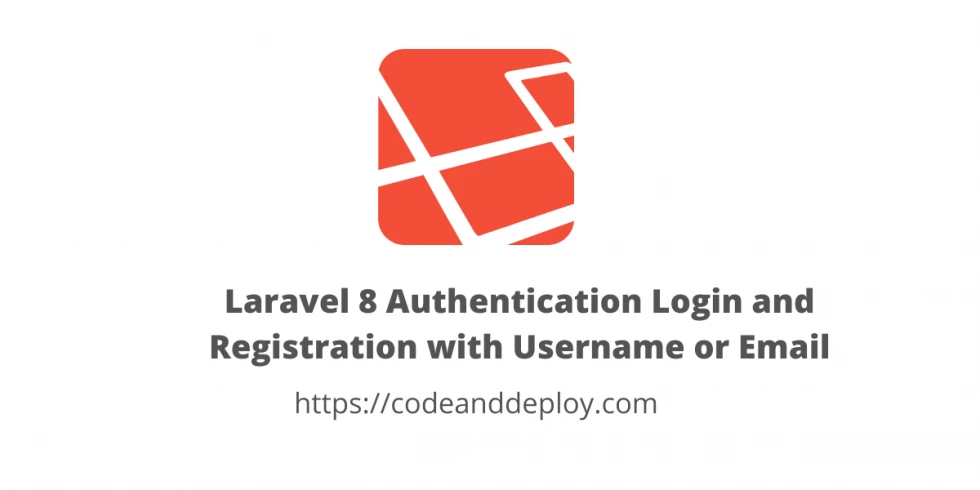
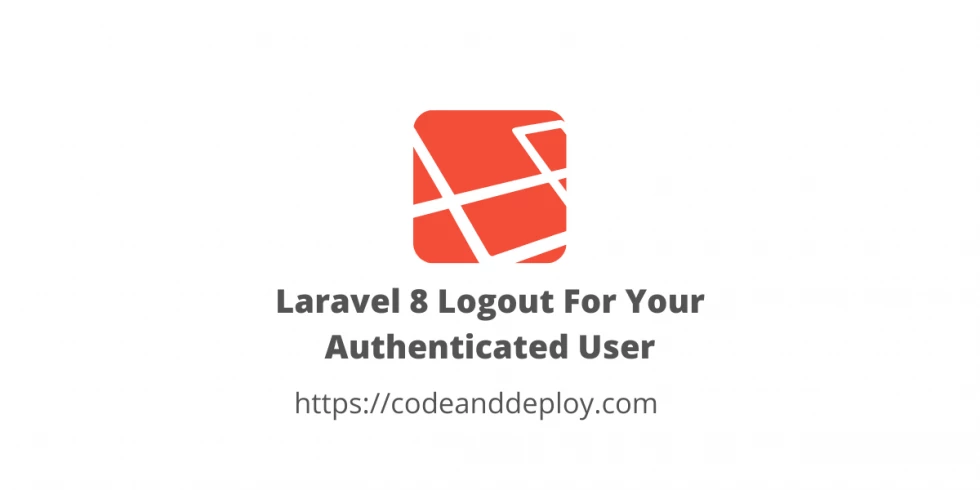

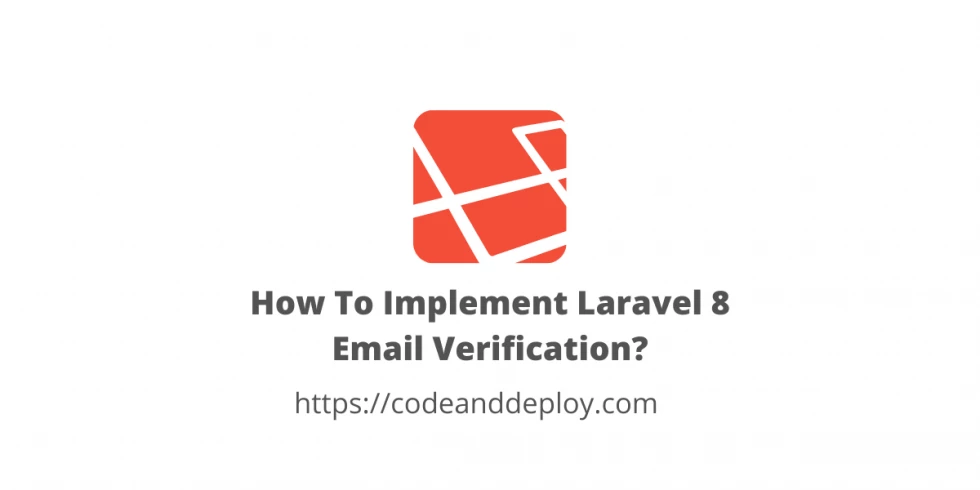
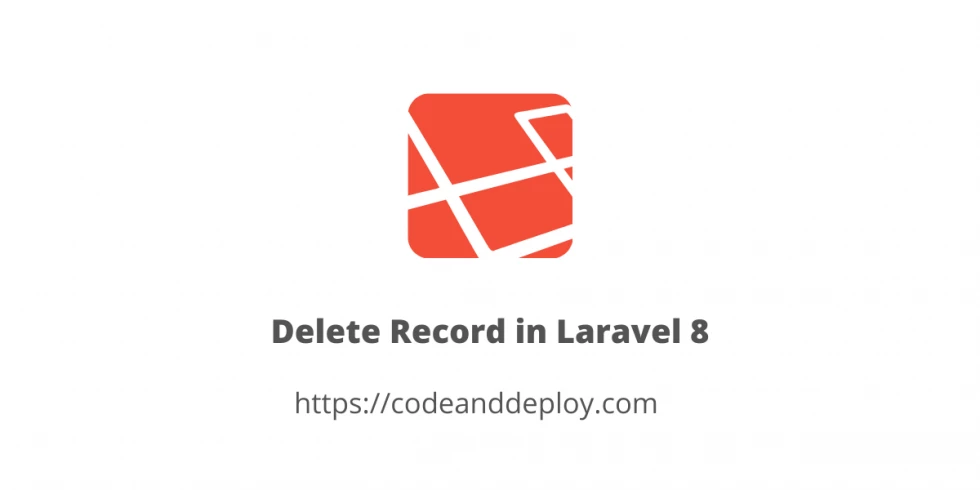
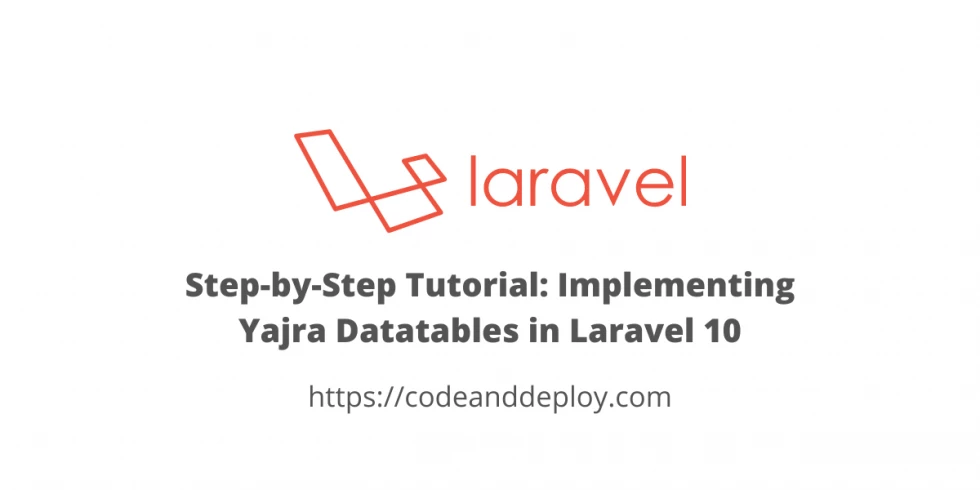
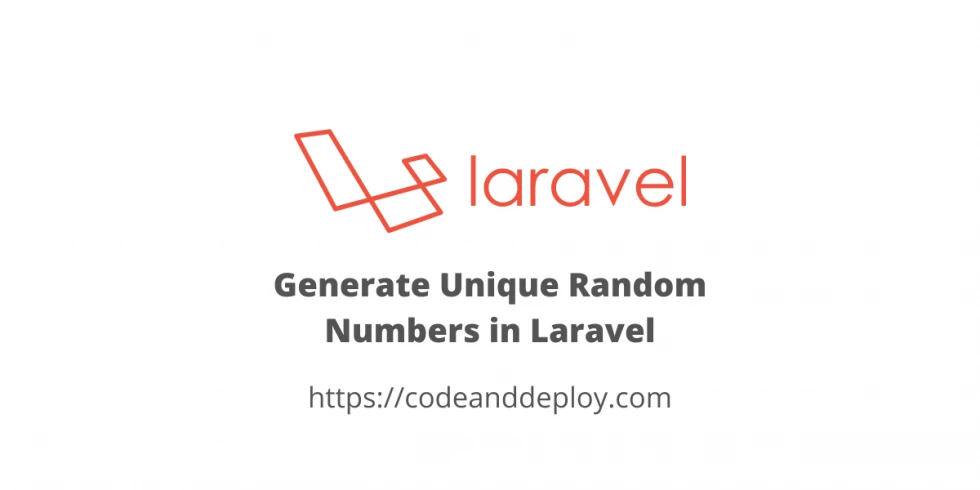

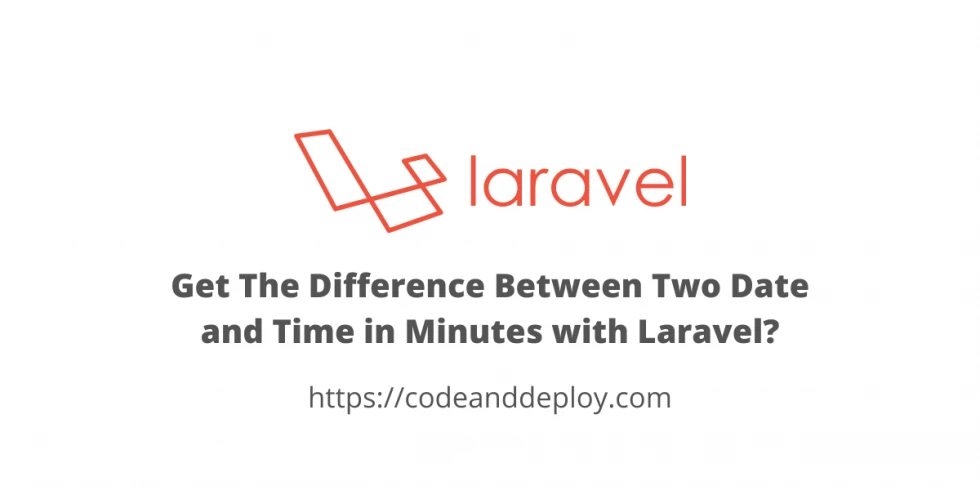
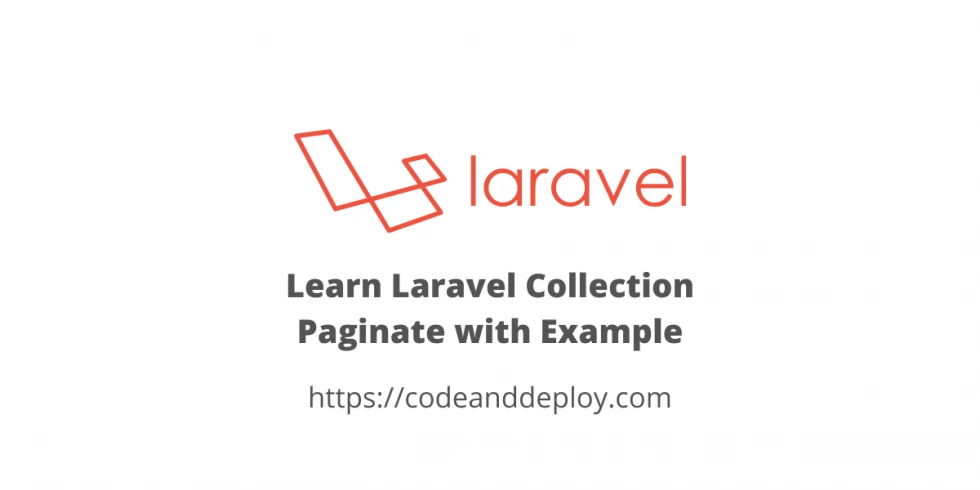
Leave a Comment